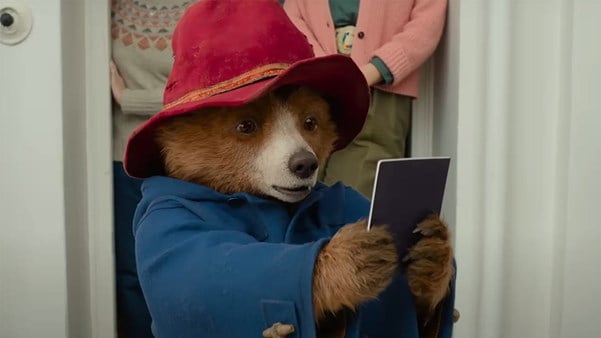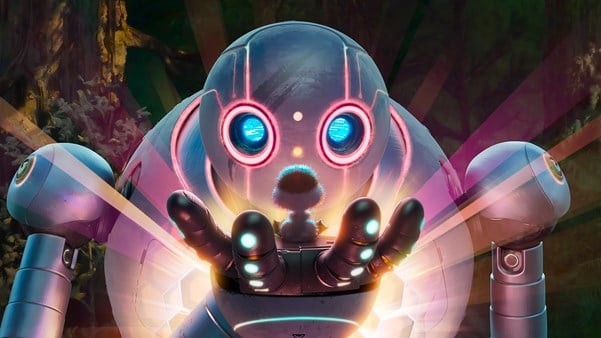Fourteen years since their last TV show, 16 since their short A Matter of Loaf and Death (2008) and nearly 20 after the Oscar-winning The Curse of the Were-Rabbit (2005), Wallace and Gromit finally return to our screens. Merlin Crossingham and franchise creator Nick Park direct the duo’s second feature-length adventure, Vengeance Most Fowl (2024).
And, for the first time, animation powerhouse Aardman is bringing back one of its most enduring characters: criminal mastermind penguin – or is he a chicken? – Feathers McGraw. He’s out for revenge on Wallace (voiced by Ben Whitehead) and Gromit because of the events of The Wrong Trousers (1993), through the sinister sabotage of Wallace’s latest invention Norbot (Reece Shearsmith), a ‘smart gnome’ assistant that’s the talk of the town.
Ahead of the theatrical release of Vengeance Most Fowl, Josh Slater-Williams talks to the production’s head of puppets, Aardman veteran Anne King, about the return of the stop-motion animation icons.

JOSH SLATER-WILLIAMS: THERE ARE SUBTLE CHANGES TO WALLACE AND GROMIT’S DESIGNS ACROSS ALL THE FILMS. ARE THERE GUIDELINES FOR WHAT YOU CAN AND CAN’T DO TO TWEAK THE CHARACTERS?
Anne King: As they’re his designs, Nick obviously has quite a big say in how they look. We spend a lot of time getting the heads and faces exactly right. A frequent collaborator resculpted Wallace and Gromit, and Nick and Merlin looked closely at the faces.
From that point, the animation team comes on board. We do a lot of testing, and get all of the mouth shapes approved. We make them reference heads for exactly how they should look, so they’ve always got a direct physical reference they can work to. There are some rules, like the sides of the head must be parallel, but the eyes are always ever so slightly in. We can get quite particular about it.

Behind the scenes on Wallace & Gromit: Vengeance Most Fowl
JSW: WHAT ARE THE MAIN MATERIALS USED FOR WALLACE, GROMIT AND FEATHERS THIS TIME AROUND?
AK: The originals were mainly plasticine and clay. Bit by bit, they’ve been replaced by foam latex, but that isn’t very durable and shrinks a lot, so we’ve moved on to making a lot of them in silicone. There was a mixture of silicone and resin, and we still mostly use clay for the heads and hands. We tried to make a silicone Feathers but it just didn’t work – we went back to clay for him.

Wallace & Gromit: Vengeance Most Fowl (2024)
JSW: WHICH DESIGN IS THE EASIEST TO WORK WITH?
AK: Having a human shape like Wallace and the police officers tends to be a bit easier, because they’re more able to stand on their legs. For a much smaller character like Feathers, any tiny little movement can really change how he looks. If the beak’s not in the right place or the eyes move slightly out of position, that’s tricky.
With Gromit, it’s very difficult to move him from one stance to another, so we end up having lots of different types of puppets: the standing Gromit, the all-fours Gromit, the squatting Gromit with paws and the squatting Gromit with arms, and then the torso Gromit and the seated Gromit.
There are all these different versions, and you don’t always know which one you’re going to need for the shot. You’ll get down on the studio floor and they’ll say, ‘We actually want a seated one instead. Oh no we don’t, we want a standing one.’ We had clay ones and silicone ones, so there was a huge range to try and juggle all the different types from it. Whereas with Wallace, we had the ones in his normal outfit, in his pyjamas and in his different costumes, but they’re slightly more straightforward.

Anne King at work
JSW: YOUR FIRST CREDITED AARDMAN ROLE WAS WAY BACK ON CHICKEN RUN (2000). WHAT HAVE BEEN THE MAJOR CHANGES WITH STOP-MOTION PRODUCTION SINCE THEN?
AK: Everything – all the rigging and action – had to be done in camera on Chicken Run. We didn’t really have any post-production budget at all. There was a lot less complexity available, whereas now we use more rigging that can be removed afterwards. Because that’s possible, it makes people want to do more complex things, more action stuff.
WATCH WALLACE & GROMIT: VENGEANCE MOST FOWL




